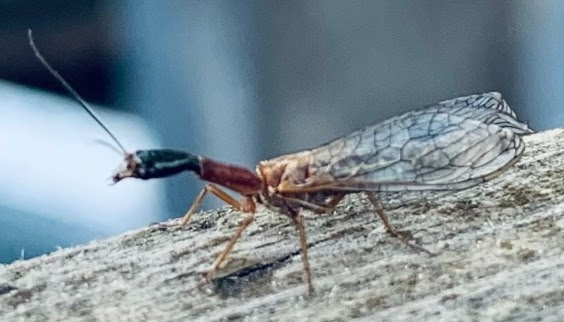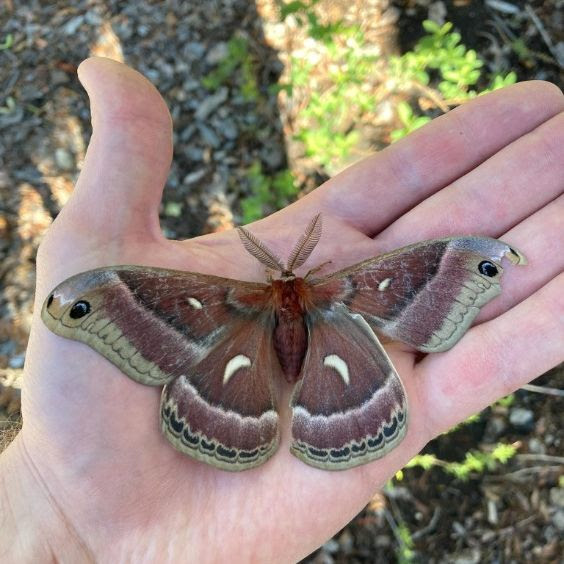These beautiful and seemingly elusive insects get their name from the long “neck” of the adults (part of their thorax). Snakeflies in this genus can be found in SW Canada […]
Read MoreWhat’s Buzzin’
What can you see around Western Montana right now?
Ceanothus Moth, male (Hyalophora euryalus)
This massive moth was ensnared in a spider web at the University of Montana campus …probably more than the spider bargained for. Brady gently freed it. They can be found from British Columbia […]
Read MoreWestern Sheep Moth (Hemileuca eglanterina)
Western sheepmoth caterpillars (also called the elegant sheepmoth) feed on trees and shrubs that include rose, hawthorn, cherry, willow, aspen, and birch. In their younger stages they prefer to dine […]
Read MoreOne-eyed Sphinx Moth (Smerinthus cerisyi)
Lisa submitted a photo of a one-eyed sphinx moth in May, but you couldn’t see the gorgeous eyelike spots on the hindwings. Peekaboo, we see you! With a wingspan of up to […]
Read MoreWestern Tent Caterpillar (Malacosoma californicum)
You may have seen these caterpillars during their earlier stages, with a bunch of their buddies in a silken tent in a host tree. When the caterpillars reach their later […]
Read MoreRobber Fly (genus Laphria)
At first glance, these extremely capable (and seemingly always hungry) predators look like a medium sized bumblebee. Their “bearded” face is one way to recognize these insects as robber flies. […]
Read MoreYellow Velvet Beetle (Lepturobosca chrysocoma)
These golden, fuzzy-looking beetles can be found from Canada to Northern Mexico, mainly in the western part of North America. They range in size between 1 to 2 centimeters. Adults […]
Read MoreA Flower Longhorn (Pseudogaurotina cressoni)
Karen thought this beetle looked familiar—it’s the “cover model” on the front of the Pacific Northwest Insects book. The shine of the metallic green wing covers was muted by an overcast sky, […]
Read MoreA Flat-faced Longhorn Beetle (Hyperplatys aspersa)
This beetle is at most 1 cm long, but sure to catch your eye. Long-horned beetles (family Cerambycidae) sport antennae typically more than half as long as their bodies (longer […]
Read MoreAphid Mummy
What looks like an aphid that’s ready to explode is actually what’s left over after being parasitized by a Braconid wasp (family Braconidae, subfamily Aphidiinae). Braconid wasps are tiny, only about 1/8 […]
Read More








